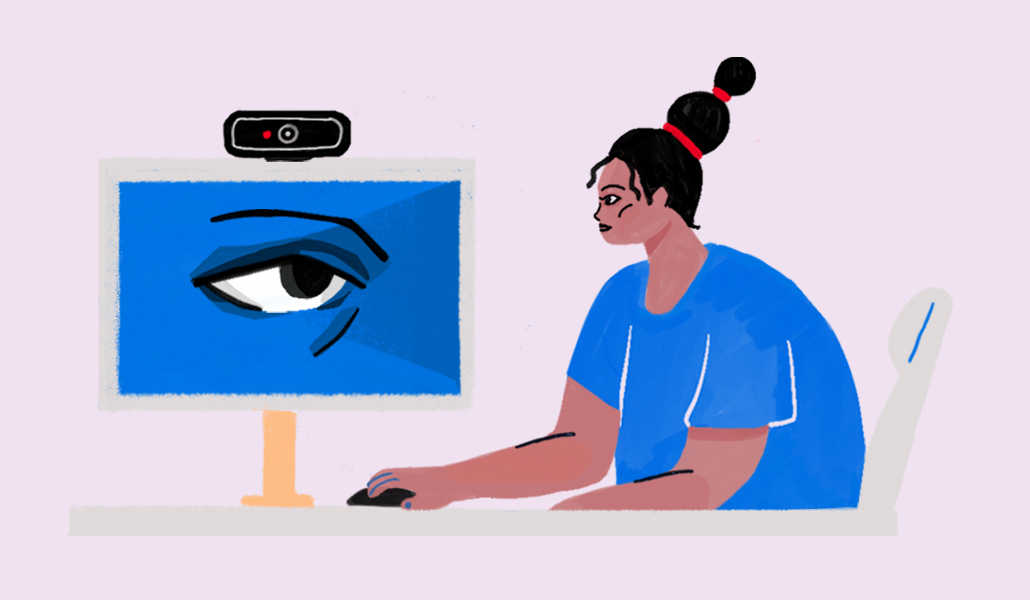IT workers push back on orders to digitally spy on colleagues

Digital tracking of employees has become a go-to method for employers that claim they need to understand the productivity levels of staff. But its increasingly widespread adoption is now causing stress to the IT teams who have to deploy spyware on their coworkers’ computers, new research has shown.
The bulk (73%) of IT managers said they are uncomfortable telling their staff to deploy employee surveillance tech on their coworkers’ computers, according to a study from digital employee experience provider 1E. And 87% of IT managers said they have seen a negative impact since their company started using tracking tech to monitor productivity, ranging from increased worker anxiety, to loss of trust in company leaders, to people quitting.
This discomfort is leading some to push back on deploying the technology, or look for work elsewhere. More than half (52%) of IT managers said they would turn down a job at a company that they knew deployed employee surveillance software, according to the same report, which surveyed 1,000 IT workers and managers in the U.S.
And three-quarters of those interviewed whose companies don’t currently deploy surveillance software said they would consider leaving if they were asked by senior leaders to deploy such software, while 30% said they would start actively looking for a new job and 3% said they would quit on the spot.
The effect of surveillance tech on employees’ mental health has been well documented over the last year. But the harm it is doing to IT workers and managers pushed to deploy it has had less air time. Some believe that, if left unchecked, employers may find themselves with an IT talent recruitment and retention issue.
“Done [using surveillance tech] in the wrong way, an unethical way, creates lack of trust, it breeds techno stress,” said Shimrit Janes, director of knowledge at workplace consultancy Digital Workplace Group, which works with clients such as Adobe, Nestlé and The Cola-Cola Group. “If left unchecked, it will continue to be felt and that then impacts talent retention. It may well impact more vulnerable populations — like caregivers or people with disabilities — as well. So if you’re trying to retain and build an inclusive organization, and they’re the ones that are being impacted the most, you have that risk of losing that talent as well. There are knock-on effects to that within society.”
Concerns around what this kind of surveillance tech was being used for were being raised long before the pandemic, but the increase in hybrid, distributed and flexible working has led to heightened use of it. “Quite a few organizations who think that butts on seats means productivity, haven’t adapted their working styles and their management styles to take in this more asynchronous way of working that requires trust,” said Janes, who recently authored “The inclusive digital workplace: Forging digital ethics” report.
Janes argued that people need psychological safety in workplaces to be creative and innovative. They need to be allowed to make mistakes as part of that.”If you feel like you can’t do that, because you’re being monitored that has a knock-on effect to innovation and creativity or it has a knock-on effect for [workplace] relationships,” she added.
Employee monitoring has existed in some form for a while, but mainly in heavily regulated industries like finance, or to provide data like timekeeping on factory floors.
But more recently, different kinds of digital monitoring software have gained traction. This kind of surveillance software is more covert and has begun to pervade white-collar workplaces and sectors that haven’t traditionally tracked workers.
“The jury is out on whether this type of [digital employee surveillance] technology is useful, and whether it’s to be accepted or not. I think a lot of people are on the fence,” said Mark Banfield, CEO of 1E.
Most (95%) of IT manager respondents in the 1E report stated that they would feel more comfortable with their company using digital surveillance tech if they were transparent about how and why they are doing it with all staff. And 89% of IT workers said they felt the same. But 48% of managers said their companies weren’t transparent about installing it.
While this type of monitoring is prevalent, it has the potential to create “huge employee uproar,” according to Josh Bersin, HR industry analyst and head of human capital advisory firm The Josh Bersin Company. “Companies who use these systems to evaluate performance never see positive results: employees game the system, and it creates low morale and resentment that benefits no-one, the organization least of all,” he added.
Constructive use of digital monitoring
Not all monitoring technology is bad. For example, more companies are using digital sensor tech to track people’s movements in the office and how they use certain areas to help inform the design layout of offices, which is changing.
And some software is set up to improve working conditions, or even the working experience. For example, some companies are using tech that measures the digital experience employees are having, with the intention to then improve the tech where necessary. “Things go wrong with devices, when you’re unproductive at home because you’re working remotely, it very often is down to a technical glitch, a slow computer or an application crashing,” said Banfield. “A lot of companies are relying on old technology to be able to manage people’s experiences and they know they’re not fit for purpose anymore. They’re built on old tech stacks and are no longer fit for purpose.”
It’s easy to tell the difference between this kind of tech-for-good because the data is anonymized. Whereas the more ethically shady kind is being used to track specifically how individual employees are working, in the name of productivity goals.
But regardless of what type of tech is being used, employers need to be transparent with employees about how and why it’s being used. “We recommend to employers that they do the work to explain to employees that any monitoring of email, calendar and other digital employee activity is to make work easier, reduce overloading and improve productivity,” said Bersin. For example, products like Microsoft Viva explicitly tell employees when they’re spending too much time in meetings, and encourage them not to send emails on weekends, and when they appear to be overworked, added Bersin.
‘Understanding the human behind it’
The rise of remote working, accelerated by the coronavurus pandemic, has created huge change to the traditional working model for office workers in particular — a status many leaders are trying to counter with return-to-office mandates. But it’s also led to a disconnect between how productive employees feel they are when working remotely, and what their managers or senior leaders believe to be the case. This disconnect was dubbed “productivity paranoia” in a Microsoft report released last year.
Add in the economic uncertainty preoccupying all leaders currently, and using tech to monitor employee productivity starts to make more sense.
But throwing technology at what is essentially a people-management issue isn’t the answer, Janes stressed. “[Managing] culture and relationships, it’s hard. People are not robots. You can’t manage them in the same way you would a piece of tech. And so they go in for the easy routes, which is the monitoring tool and tracking hours worked and number of emails sent, instead of really understanding the human behind it,” said Janes.
Plus, there is no guarantee that surveillance tech will gather the right data. There are numerous workarounds that can be used to mimic mouse movement on a computer or maintain a green dot on a digital communications platform like Slack or Teams to show a person is working. And ironically, people are even losing time they would have spent working to find ways of getting around the surveillance technology, added Janes. “People don’t want to be expending their energy trying to make it look like they’re working. They want to do the work,” she said.


